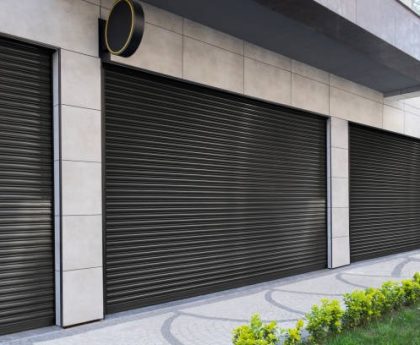Metal making is like an amazing performance in which people change basic metals into specific shapes and designs we have planned. It’s a tricky mix of knowing about science and being creative, ending up with things we use all the time, like kitchen gadgets or big factory equipment. But how do they do it? How do they turn a flat piece of metal into something like a car door or a detailed machine part? Let’s go on a fun journey through the world of making metal things and find out how it’s done step by step.
Design and Planning
Every great creation starts with a blueprint—the same goes for metal fabrication. Before any cutting or welding takes place, experts craft a detailed plan. This ensures the final product will meet the necessary specifications and standards. Here, the journey begins. Designers and engineers come together to decide on the metal’s type, thickness, and shape required for the project at hand.
Material Selection
Choosing the right material is like picking the perfect ingredient for a recipe—it can make or break your dish! Different metals have unique properties. Some are more flexible, while others are known for their strength. It’s all about finding the material that fits the purpose of the end product.
Creating Detailed Drawings
With materials chosen, precise drawings are crafted using software like CAD (Computer-Aided Design). These are the maps that guide fabricators throughout the process, ensuring everything is cut and assembled correctly.
Cutting the Metal
Once the design is locked in, it’s time to cut shapes out of the metal. Fabrication shops use various methods to cut metals, depending on the design complexity and the material’s thickness. Some of the most common techniques include:
-
Shearing: Perfect for making straight-line cuts on flat metal stock.
-
Laser Cutting: Offers precision for complex shapes and high-quality cuts.
-
Plasma Cutting: Ideal for cutting various metal types and thicknesses quickly.
-
Waterjet Cutting: This is a high-pressure stream of water, with or without an abrasive, that cuts without altering the metal’s inherent properties.
Each method has its place, and fabricators choose based on the project at hand.
Forming and Shaping
After pieces of metal are cut to the correct size and shape, they often need to be bent, formed, or molded. This is where tools like presses and rollers come into play, bending the metal without breaking it to match the designs created earlier.
Press Brake Forming
One of the common techniques used is press brake forming, where a piece of metal is placed between a punch and die set. Pressure is applied, creating bends and angles. It’s a highly skilled task that requires precision.
Welding and Assembly
Here is where we start to see separate pieces come together to form a cohesive whole. Welding is a crucial step in the metal fabrication process. It involves fusing metal pieces using high heat and occasionally adding a filler material to form a strong joint.
There are different welding methods, including:
-
MIG welding: Versatile and relatively easy to learn, suitable for a variety of projects.
-
TIG welding: Requires a higher skill level but provides high-quality, precise joints.
-
Stick welding: Often used for heavy-duty repairs and construction when appearance is not the primary concern.
Once all pieces are adequately welded, complex structures are assembled, whether they are machinery or building components.
Machining
After the primary shape has been crafted, further refinement is often needed. This is where machining comes in. High-precision tools like lathes, mills, and drills remove excess material to meet exact specifications. In precision machine shop services, meticulous attention to detail is paramount, ensuring that every cut, every hole, and every thread is just right.
Finishing Touches
The metal may require finishing to improve its appearance, protect it against corrosion, or enhance its durability. Finishing can entail a variety of processes:
-
Sanding and grinding smooth out weld marks and any rough edges.
-
Painting and powder coating add a layer of protection against the elements.
-
Anodizing applies a protective oxide layer to aluminum parts, increasing corrosion resistance and wear.
-
Plating can add further corrosion resistance or aesthetic appeal.
Each finishing technique has its own set of benefits, and the application of the final piece drives choice.
Quality Control
Every product leaves the floor with a thorough check. The process of quality control in metal fabrication is rigorous. Measurements are taken, and components are inspected to ensure they match the design specifications. If a piece doesn’t comply, it’s back to the drawing board—or, in this case, back to the previous fabrication step for corrections.
Delivery and Installation
Once the fabrication process is complete and quality control gives a thumbs-up, it’s time for delivery; for items like structural frameworks or custom metal fabrication in Kansas City, transport and installation require careful planning. After all, the final step is to see these metal marvels in action, fulfilling the purpose they were designed for.
Adapting with Technology
Today’s metal fabrication shops are increasingly incorporating advanced technologies into their processes. For example, CNC machine shop services have revolutionized the industry. CNC stands for ‘Computer Numerical Control,’ a system that automates control of machining tools with incredible precision. This not only speeds up the fabrication process but also enhances the accuracy of the final product.
Final Thoughts
Metal fabrication is the art and engineering of turning metal into products, evolving with new technologies. It starts with design and ends with delivery, each step crucial in creating metal pieces that shape our world. Though not always glamorous, it’s vital and showcases fabricators’ ingenuity as they transform metal into complex parts or structures. When you see a metal item, remember its journey from design to reality—this is the heart of metal fabrication.





